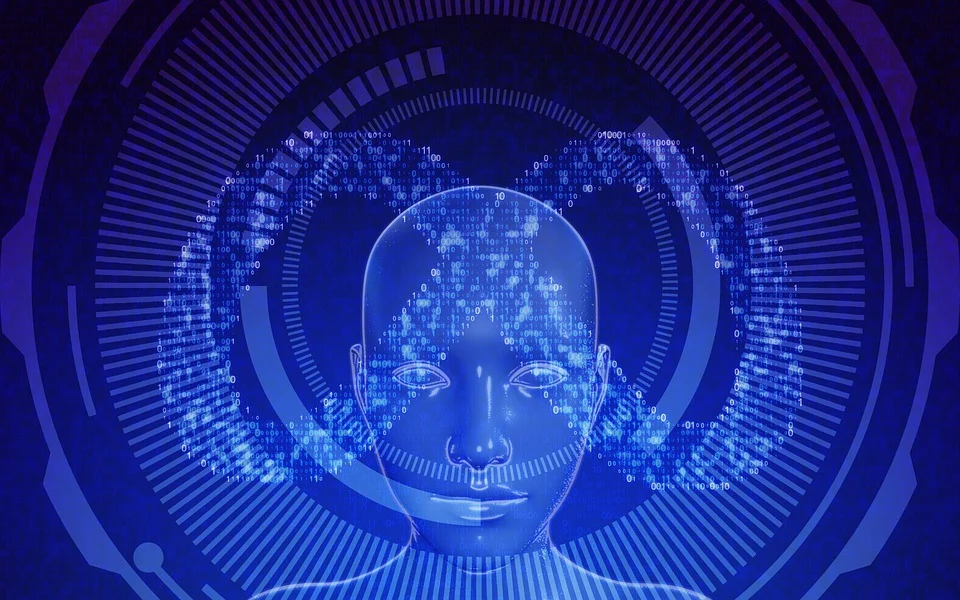How Web 3.0 And Metaverse Will Shape The Future Of The Internet
Mark Zuckerberg listened to popular podcasts for the majority of the final quarter of 2021 and nearly all of 2022. He did this to engage with internet users and alter how they perceive Meta. On his tour, he met people from the Joe Rogan Podcast, Lex Fridman, Tim Ferriss, and Gary Vee. The most intriguing part of his appearance was undoubtedly when he discussed Web 3.0 and the metaverse on Gary Vee.
Metaverse development will be able to increase interest in its future offerings by making these things less enigmatic. After all, Meta’s success has a big impact on Mark Zuckerberg’s income.
But investors are dubious about Meta’s new emphasis on services for developing the metaverse and other Web 3.0 technologies. The following guide will seek to learn more about this.
Let’s Describe Web 3.0
“Wait, there are different types of the internet?” Like many others, you may have only recently recognised that there have always been various versions or generations of web technology. The most recent version of the internet to be developed isn’t even Web 3.0. Industry professionals have already begun to speculate on what Web 4.0 and 5.0 will look like.
Similar to movies, it’s crucial to familiarize yourself with the prequels in order to comprehend the themes of the sequels.
Web 1.0
The first networks for exchanging information were established in 1983. The internet officially launched at this time. However, it wasn’t until 1993 when the source code and editor for the first real web browser were made available that people started to like the internet.
The term “Web 1.0” quickly came to describe these early web developments. Many websites were created at this time using primitive forms of HTML without style sheets or scripts. The majority of web sites were static because web designers utilized frames and tables to position elements correctly on the page.
Web 2.0
The dawn of the new millennium brought with it new possibilities for online technology. The beginning of Web 2.0 can be linked to the dotcom crash. The phrase gained acceptance following the initial Web 2.0 Summit (2004). One of the most significant aspects of this time period is the employment of server-side and client-side scripting tools and frameworks like JavaScript and AJAX.
People were able to contribute information to web pages and arrange information in whatever way they liked because of it. More individuals started using the internet as web-enabled technologies grew more user-friendly extending the reach of the World Wide Web.
Machine learning, artificial intelligence, and other web technologies have advanced more quickly as a result of the Covid-19 pandemic, pushing us even further to the edge.
Unfortunately, a lot of research has shown that tight data compliance has hindered the advancement of innovative technology. For instance, some developers could find it difficult to ensure PCI compliance in a 3D virtualized e-commerce environment. We still have a long way to go, despite the fact that many in the business believed that 2022 would be the year that Web 3.0 would finally become a reality.
Web 3.0
The next development in the development of the internet is known as Web 3.0 or Web 3. The ultimate objective of Web 3 is to enable machine reading of the internet. Utilizing technology like artificial intelligence (AI), the cloud, and distributed ledger systems like blockchain development services is one approach to achieve this. Its application for securely receiving and storing payments received through crypto-related transactions has previously been shown. As a result, when people discuss Web 3, they frequently follow it up with discussions of NFTs and cryptocurrencies.
Additionally, Web 3.0 mandates that we move away from or utilize the Web of Things to expand the Internet of Things (IoT). But how do the metaverse and virtual reality fit in? The widespread use of 3D graphics on the internet is another crucial component of Web 3.
For games that can only be played through a web browser, 3D visuals are already used. But the way we shop, teach, learn, explore the environment, and do other things could alter thanks to 3D graphics, particularly when integrated with virtual reality (VR) technology.
The metaverse and Web 3.0 converge here.
Here are the Top Web 3.0 Projects:
The following are a few of the best and most intriguing Web 3 projects:
Filecoin
The blockchain-like project Filecoin uses a distributed ledger technology to operate. The Filecoin network serves as a decentralised market for data storage. It makes use of a peer-to-peer digital storage network, similar to BitTorrent, where users can distribute the storage and retrieval of their material. Due to built-in economic incentives, Filecoin ensures that data are consistently preserved securely.
Helium(HNT)
Helium offers a wireless infrastructure that isn’t under the control of a single corporation thanks to its own implementation of the blockchain distributed ledger concept. In the past, crypto mining was carried out through a network of interconnected crypto mining devices. These devices were essentially computers with a lot of powerful graphics cards installed. They were bad for the environment since they consumed a lot of power.
The radio transmission tool that Helium utilizes to create a wireless peer-to-peer network provides the foundation for its services. It rewards users who install these devices with HNT, Helium’s official cryptocurrency. In the end, running your Helium gadget is equivalent to mining cryptocurrency. However, in terms of price and power, Helium’s solutions are superior.
Brave Browser
People who are already familiar with the Brave browser may find this entry unusual. Since Brave was first released in 2016, it is not a recent invention. But just as they need the TOR browser to access the Dark Web, they need a specific browser to access Web 3.0 networks.
The Metaverse
The majority of the internet is made up of a global network of servers that are interconnected. Users can access internet material on each server using their internet-capable devices. Although it oversimplifies how the internet operates, we’ll take it as a starting point.
Imagine if all video games operated in the same manner. Simply unlocking a door in the game would allow you to transition between video games. You can switch between the worlds of Grand Theft Auto and Call of Duty using a function included in both games.
By examining this example, we can discover more about the metaverse development services. The metaverse is a network of interconnected virtual reality platforms rather than a single platform. Even though the Meta platform wants to refer to the space where all of its products coexist as the “metaverse,” that term doesn’t quite fit, at least not in the way that most people would understand it.
Meta does not own the metaverse. Although Horizon Worlds is frequently confused with the metaverse, it is merely one of the many products Facebook has invested in to gain ground in Web 3 and the metaverse.
The Metaverse’s Largest Projects include:
Once more, most people are aware of what Facebook and Meta (also known as Meta) have accomplished for the metaverse. They aren’t the only important players, though. You’ll discover information about metaverse initiatives not headed by Mark Zuckerberg in this section of the book.
Microsoft Metaverse
Microsoft’s major objective is to assist users in obtaining more accurate metaverse representations of themselves. The business believes that allowing users to imprint their humanity and agency will increase the immersiveness of the metaverse. The concept is that you should feel like you are the avatar, not the other way around. After the Covid-19 outbreak, people began to live apart from one another. Microsoft believes that if people can make their online personas reflect who they are in real life, it will be simpler for people to interact online.
Theoretically, this would enable remote workers to participate in board meetings that have a genuine feel. Real-time translations will be available in the metaverse, according to Microsoft, making it simpler for teammates from all backgrounds to communicate and cooperate.
In the end, Meta is more concerned with the metaverse’s social features, whereas Microsoft is more concerned with its commercial ones. They viewed the metaverse and virtual reality as a chance to capitalize on the popularity of their platforms for metaverse store setup, remote work and communication (Zoom, Microsoft Meetings, etc.)
Lamina1
The term “metaverse” was coined by science fiction author Neal Stephenson. He may even be credited with creating Web 3 and the metaverse. Neal Stephenson announced that he would create his own version, named Lamina1, based on distributed ledger blockchain technology, by the end of September 2022. This would create a Metaverse that is not governed by a single location and is accessible to everyone.
Decentraland
Decentraland has made headlines almost as frequently as Meta. Investors have used cryptocurrencies to pay hundreds of dollars to purchase virtual land in Decentraland. Many people want to one day profit from this land.
Anyone can download it because it has an Apache 2.0 license. The virtual lands of Decentraland are not free, but the software that powers them is. The majority of land parcels are purchased and sold using MANA digital currency.
Decentraland didn’t gain popularity until 2022, when well-known companies like Samsung, Atari, Miller Lite, and Adidas began to acquire real estate or place advertisements there.
Final Words
The metaverse is a collection of interconnected virtual reality environments. At the end of the day, it’s designed to enable immersive internet browsing. Keyboards and mice will be replaced by VR headsets as standard accessories. And the metaverse will take the place of your web browser. The use of Web 3 technologies is essential.

















